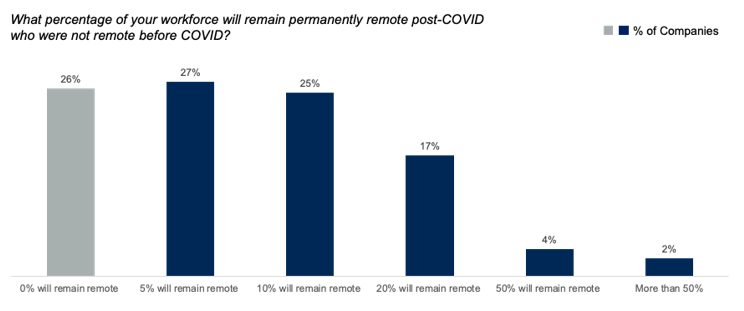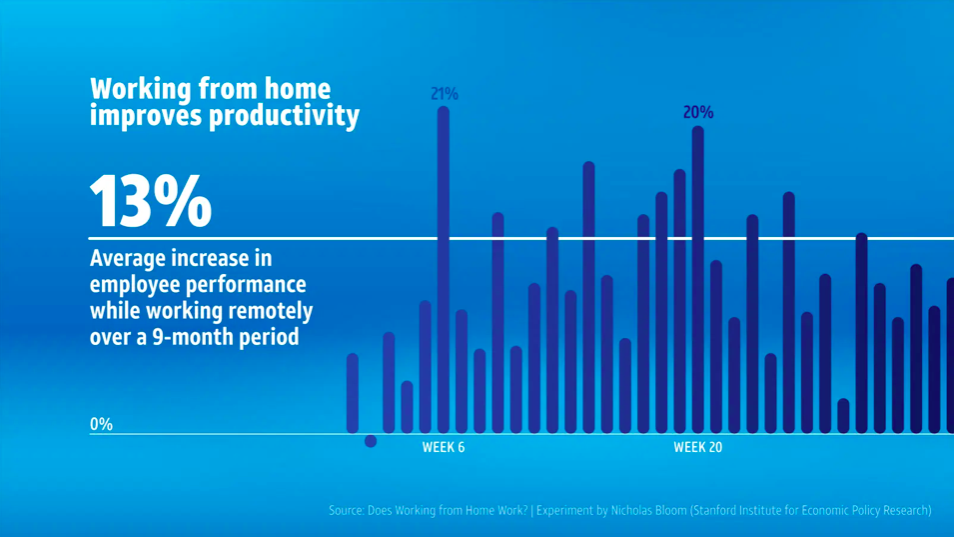The technological revolution has run headlong into “the new normal”, accelerated by the addition of the global Covid-19 pandemic. What has been the effect on global industries? While traditional closed offices were being plowed under by isolation and social distancing, those companies that had already moved online, using remote service providers and work-from-home employees were thriving.
In order to get a firsthand look at how other organizations have dealt with similar matters, we will be discussing this subject with Ofer Tirosh, the CEO of Tomedes, a translation company that focuses on globalization through localization. He is uniquely qualified as his company not only provides legal document translation services for companies moving overseas, but he also serves as both a public speaker and consultant assisting businesses globalize.
Further, his translation company relies heavily on remote workers, most of whom work from home. While other translation companies working in more traditional offices were adversely impacted by the coronavirus quarantine, his translation company using work-from-home service providers remained largely unaffected. While live interpretation services were going out of business, remote interpreters and other remote language service providers were getting more business than they could handle and had to take on new employees. He has even put together a list of work from home tips to help employees who are new to remote employment.
How does the COO of a major corporation make this work in their favor?
It should be obvious that just walking into the office, telling everyone to go home and then expecting them to continue working will not work. Surprisingly perhaps, this is entirely too common as new policies are put into place as a reaction to circumstances beyond their control. The key to successful digitization of operations is in the planning stage.
If the company operations are prone to any circumstantial change, it will almost certainly fail. At the same time, it is impossible to prepare for every possible contingency. Thus, it becomes imperative for the COO of the manufacturing firm to know and understand not only how remote workers will impact the company, but which workers can be allowed to work remotely, which business processes can be outsourced and which may even be open for off-shoring.
According to a report posted on ZDNet in April of 2020, 13 percent of companies using remote employees have already cut real estate expenditures with 9 percent more planning cuts in the near future. 90 percent of CFOs recognized that their accounting operations will run just as efficiently off-site and will not adversely impact operations and will increase company savings.
20 percent of the Chief Financial Officers of the corporations expressed the ability to reduce spending on technology, with 12 percent of the respondents indicating the ability to do so in short order. 81 percent of the CFOs that were interviewed claimed that the savings from using remote workers and flexible work-from-home scheduling was sufficient to allow them to “exceed their contractual obligations” for their hourly workers.
Offsite Operations Planning and Feasibility Studies
The best means to determine these factors is through the commission of a feasibility study. A feasibility study puts together all of the current and existing factors and draws a conclusion on the current model of operations. It then includes more subjective data using informed projections based on possible variables in future operations.
From this analysis, the best possible methods can be determined to allow for the uninterrupted manufacturing operations including any time necessary to implement the recommended changes.
This may be time allotted to allow remote employees to become accustomed to working from home, time to translate and interpret all of the legal documentation required for offshoring, or even training employees to learn new languages when outsourcing or offshoring mandates more than just simple translation services.
In the case of the outsourcing of manufacturing operations, any potential for delay should be minimized. Offshoring manufacturing operations may take more time, but will still allow for full operational control by the parent manufacturing firm.
Offshoring generally requires the establishment of a manufacturing plant in a foreign country. Most countries will also have minimal requirements for the number of locals who must be hired, meaning that there will be the need for document translation services and interpreters until such a time as languages can be learned and any potential cultural barriers are overcome.
|
What are the critical components of a feasibility study for Remote Operations and Digitization in the Manufacturing Industry?
|
How do you determine which portions of operations can be handled by remote employees?
Information and analysis are the keys by which these determinations must be made. How many people does it take to receive, scan and file receipts and other paperwork on site? How much of the accounting work can be (or already is) outsourced to third party service providers or remote workers?
How many IT people must be on site to maintain servers and other computer equipment? How much of the server maintenance can be handled by remote employees using secured private networks?
Which portions of operations can be handled by third party service providers?
How do you establish a work from home policy or remote worker guidelines?
There are a great many reports indicating that work from home employees are more productive. This statistic is tossed around quite a bit these days but fails to take two factors into consideration. One, most of these reports are fairly old, based on an old 2010 Chinese study. It is nevertheless, almost certain that due to recent events, many of these studies will be revisited and researched anew.
And two, those companies whose remote employees exhibited the most increase in performance were companies that had established firm and consistent remote worker policies and guidelines. Remote worker policies and guidelines should be established as a separate portion, but still an integral part of the employee handbook, manual or other expression of agreement between the manufacturing firm and its employees.
What should be included in the remote workers policies and guidelines?
Availiability – When are the employees expected to be at their work stations or in their home offices? Are there options in places for working in additional locations? Is the work task based or limited to working hours?
Confidentiality Agreements – This portion should include not only a signed agreement such as a Non Disclosure Agreement, Work For Hire, or any other such agreements as may be made, but also
Eligibility – Which employees are eligible to work from home as remote service providers?
Equipment – What equipment is the employee expected to have? Is the manufacturing firm required to provide equipment for remote workers or should the work from home employees be required to provide their own supplies?
Productivity – What is the expected level of production. Is there any time allowed for the employee to adjust? Would this be considered to be a probationary period in conjunction with current manufacturing firm guidelines?
Restrictions – What restrictions are in place? Would the employee be able to work over an unsecured network such as may be located at the local coffee shop?
Security – Will the employee be allowed to use their private email for communications? Is a VPN necessary for use to connect to intranets or other in-house systems? Are any password restrictions are in place?
Service Providers – Are there any specific service providers that the work from home employees must use? In cases of off-shoring or outsourcing of the manufacturing production, it may be necessary to use remote video interpreters. Are there stores where they can purchase supplies on the company account? Are there additional services that the remote employees may require that should be restricted?
Technical Support – Will additional background checks or other security measures need to be taken if tech support will be making house calls? What are the technical obligations of the manufacturing firm as opposed to those of the work from home employee? To what extent will the manufacturing firm be liable for issues of the personal property of remote employees that is required for them to perform their tasks?
Termination – The reasons for terminating a remote employee are likely to be different than they will be for those personnel working within the physical confines of the manufacturing firm. The causes for determination should be clearly defined so as to prevent legal issues at a later date.
Remote Worker Policies and Guidelines Supplemental Information Sheet – There should be an added section including supplemental information. Among the information is the inclusion of relevant tax laws that the work from home employee may not be aware of. Will payment be made electronically? Will the employee be responsible for coming in and physically getting their check? Will this interfere with their work schedule? Any additional information should be included in this portion if it does not merit its own section within the remote employee policies and guidelines.
How do you track time and progress of remote employees?
Especially in manufacturing perhaps, it is important to have supervisors, administrators and even Human Resource departments to deal with the employees and to manage and oversee all aspects of operations. One of the primary areas of concerns is ensuring that remote employees are actually working during their work hours.
An article that was updated in April of 2020 is posted on the Business News Daily website and offers many time tracking program solutions for remote employees. There are numerous options available to track the time of remote employees and ensure that everyone is continuing to do their jobs, even when working from home.
How do you interact with remote employees?
Human resources interaction with remote employees can be a little more challenging, but is still easily accomplished. The idea of forcing an employee to keep a video camera trained on them all day could be seen as intrusive, but meetings and other interactions remain imperative to successful business operations.
Primary meeting schedules are ideally situated at the beginning and ending of the work week. These meetings will be in order to determine scheduling, tasks and other issues regarding the oversight of operations in a remote work environment. Additional meetings should be restricted to only those that are necessary in order to avoid discussing sensitive matters in front of large groups of employees.
Chat programs also offer a viable means for remaining in constant communications with remote employees, while at the same time allowing them to engage in video calls as necessary. Skype and WhatsApp remain among the most popular choices, though again, selection must be made after determining a complete list of necessary and desirable features and selecting the video or chat program based upon the evidence and analysis.
How do you interact with outsourced remote service providers?
The same principles necessary for communicating with outsourced remote service providers also holds true in the case where manufacturing operations are being off-shored. Having a subsidiary in a foreign nation can often allow for the uninterrupted continuation of manufacturing operations even during times of crisis.
Furthermore, offshoring manufacturing operations will allow for the manufacturing industry professionals to retain complete control of operations. However, the difference in time zones and even language barriers can create challenges.
Fortunately, there are translation companies that provide remote video interpreters at any time of the day or night. Internal communications between outsourced remote service providers or even offshored manufacturing operations can be easily handled through the use of these professional translators and remote video interpreters.
In the case of offshoring the manufacturing process, it is likely that any challenges of communications may be restricted to two to three language pairs. In such cases, most of the requisite translation for the manufacturing process and the ensuing paperwork may be handled in-house.
In other cases, such as when the manufacturing operations are being outsourced, and import and export of the manufactured goods is a primary function of the manufacturing firm, it may be better to use the services of a professional translation company, ideally one that specializes also in localization of the language services. The translation company can provide instantaneous interpretation or even the translation of legal documents that may be required for a manufacturing firm that focuses on the import and export of manufactured goods.
What are the dangers of remote employment?
Outsourcing the manufacturing process may result in a loss of quality assurance, logistics and other issues of vital concern to the manufacturing firm. Outsourced employees may also result in the same type of concerns if they are not properly managed.
Off-shoring manufacturing operations is generally a better solution, especially given the recent social unrest within the US manufacturing markets. There may be a period of adjustment where translators and interpreters are necessary for this process, those these can generally be sorted in short order through human resources.
While there will always be certain risks associated with manufacturing operations, these can be largely mitigated in the research, analysis and planning stages within the feasibility study. There should already be established solutions for any potential concerns that will be raised once the new remote work policies are implemented in full.
What are the company benefits of remote employment?
An older study by Global Analytics found that the average company would save eleven thousand US dollars per year for each remote employee. This was determined when factoring in the cost of equipment, utility consumption and a host of other factors. Add in the increased productivity of remote employees and the financial benefits are obvious.
Additional benefits tend to include more satisfied employees, more productive employees and a better work-life balance among the remote employees most notably. Outsourcing of manufacturing operations is certainly one distinct possibility. Given the current level of social unrest, the potential for Covid v2.0, and other unknown factors, off-shoring of the manufacturing operations and an increase in remote service providers seems the most viable option as we continue into “the new normal”.





































